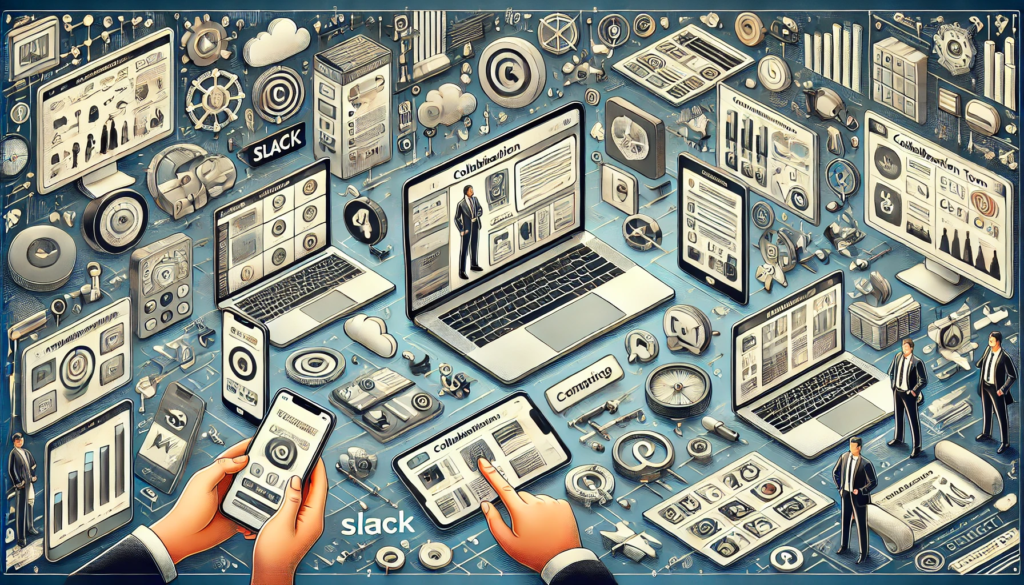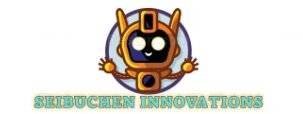
Collaboration tools serve as communication allies, ensuring no one falls through the digital cracks. They promote open dialogue, streamline workflow and align teams toward reaching project objectives.
Jira is a project management tool typically utilized by tech teams to track issues and projects from start to finish, aid communication among team members, and increase productivity.
Slack
Slack is one of the most widely used collaboration tools in the workplace, enabling teams to communicate via chat and voice or video calls. Users can share files, use emojis and create channels to organize discussions by project or topic. Furthermore, Slack supports numerous integrations and work automation and can even be accessed remotely, allowing you to collaborate with remote workers.
Conversations can be organized into channels that are either open and public or restricted for specific teams of teammates. Teams can easily switch between channels to find the information they require, with conversations being searchable and archived, so it’s easier for teammates to catch up quickly.
Slack can also serve as a platform for knowledge management by creating knowledge bases and enabling teams to quickly access key information without needing to open multiple apps. Slack can easily integrate with record systems like Salesforce and HubSpot and development tools like GitHub, Jenkins, and Google Drive to create an all-in-one home for vital business data.
Zoom
Zoom is one of the easiest video conferencing platforms, making meetings quick and simple with tools such as virtual whiteboarding and chat functionality. Zoom also supports third-party integrations and applications like Asana and Trello to facilitate easier collaboration during meetings.
Zoom Survey allows you to quickly create and share surveys, polls, and quizzes with your team during Zoom meetings and webinars. This enables you to collect responses from those unable to attend in person and those not registered for your meeting; once complete, you can easily view results in an overall response overview by department, conference, webinar, or individual responses.
Integration of the Google Drive app with Zoom enables easy document editing during and after meetings, providing management professionals with efficient document editing during staff training webinars or meetings with their teams from anywhere in the world. OnlyOFFICE DocSpace also makes collaboration on text documents, presentations, spreadsheets and forms during Zoom meetings easier – this feature is free for all Zoom users!
Toggl Track
The track provides comprehensive reports and analytics, giving insight into time allocation and project progress – creating an efficient work environment. The software assists teams in managing new and recurring projects while monitoring budgets and deadlines. Furthermore, Track facilitates client segmentation and team management by helping organize tasks so teams can efficiently handle all assignments.
Google’s platform allows teams to keep a log of activities throughout their day and record them in an activity timeline calendar. Users can choose which time entries to share as time entries, track app and browser activity tracking, and automatically save reports or create alerts regarding project statuses.
Google’s paid plans feature more advanced features. These include archive clients, fixed fee projects, team time tracking reminders and team dashboards for projects, centralizing labour cost control and billable rates control, historical report comparisons, and much more.
Toggl Track offers various subscription levels to meet any organization’s needs. The free plan provides ad-free tracking of unlimited projects, clients and tags. At the same time, its starter counterpart costs $18 annually, including archive clients, time rounding, saved reports, and an admin dashboard. In addition to these features, archive clients, time-rounding saved reports, and an admin dashboard are included. Lastly, Toggl Track Premium costs $20 monthly with additional features, including time tracking audits, timesheet view project estimates and team reports required fields.
Google Docs
With more offices shifting towards hybrid working practices, collaboration tools have become essential for successful teams. Google Docs makes this task possible by allowing multiple users to work simultaneously on one document at any given time – offering 24×7 access so anyone can contribute whenever convenient for them.
By locking down your document to just view or comment-only access, this tool also enables you to restrict who can view or comment. Simply use the “Add people and groups” box on the Share screen to enter the names or email addresses of those you would like to collaborate with on your doc. Google will suggest matches from your contacts as you type; simply click one to add. Likewise, collaborator access levels can be changed from Editor to Viewer or Commenter at any point during the editing.
Google Sheets is an invaluable collaborative data tool. Clean and intuitive to navigate, it integrates well with other Google products for everyday business (like Google Analytics and Data Studio, now Looker Studio ) for insightful visualization of complex data sets and all necessary spreadsheet functions to efficiently manage large volumes of simple or complex information. Plus, it even lets you view revision history to access older versions of files when necessary.
Evernote
Evernote stands out from other note-taking tools by providing multiple ways for teams to collaborate on ideas and information simultaneously, with team members editing notes simultaneously to push projects forward and get more done. Furthermore, Evernote is highly mobile-friendly and supports various file types, including images, links, and audio recordings – not to mention up to four personal, professional, or team accounts, which you can easily switch between.
Evernote is an ideal solution for business collaboration, featuring a powerful search function that can search text within images – perfect for finding documents like receipts or manuals quickly and efficiently. Furthermore, Evernote integrates with numerous apps and online services like IFTTT and Zapier for ease of use.
Evernote offers collaborative tools that enable team members to share and comment on notes, create shared notebooks, or start fresh notes for projects. Users can add to-do lists directly into notes; furthermore, Evernote features an easily customizable dashboard, giving quick access to important features and tools.
Another key feature is the ability to set view or edit permissions for individual notes while sending notes directly via email for review by colleagues for feedback and review. Furthermore, this app’s synchronization mechanism uses Conflict-Free Replicated Data Types (CRDT), ensuring that each copy can be updated independently while eventually reaching a single state.
Google Keep
Google Keep is an intuitive note-taking application with collaboration features for team members. As a cross-platform application, it features lists, notes, photo reminders and handwriting recognition capabilities for you and your team members. Users can assign tags to notes for easy searching while creating location and time-based reminders.
Keep is one of the more user-friendly Google applications and works well across platforms, offering simple functionality with an appealing aesthetic. As with other Google apps, Keep has proven popular among users; its design has also won accolades from critics. But many other note-taking apps – including our Editors’ Choice choices OneNote and Joplin – provide more extensive functionality than Keep.
Keep is more of a notepad than an all-out collaborative application; people use it mostly as a quick notepad, similar to a sticky note on a wall.
Still, Keep is an invaluable application for collaborative work. Users can access their notes via Google Docs and refer to them while collaborating. Organizers can shuffle around notes’ orders or pin key ones so that they appear first when searching the Keep page; archive any no longer needed notes and archive their own. Plus, everything syncs automatically!
Dropbox
Dropbox, known primarily as a file storage service, also features collaboration features that make it an invaluable team asset. For example, team members can comment on files and create shared to-do lists through Dropbox; users can customize permissions on shared links, and expiration dates can be set to control access.
Mobile and desktop software work together seamlessly to sync all files stored on each device in real time, making it easy for workers to work from anywhere. Automatic backups on each device protect important documents in case of a hard drive failure or another disaster; additionally, this solution can integrate with other workflow tools like project management apps and DAM solutions, saving time switching between applications.
Dropbox can also help streamline processes, like signing contracts using legally binding eSignatures created directly within Dropbox and gathering feedback via screen recordings or voiceovers. With 5TB of storage and admin controls, it helps teams stay organized and productive. It keeps projects moving smoothly while safeguarding sensitive information with secure encryption in transit and at rest.

